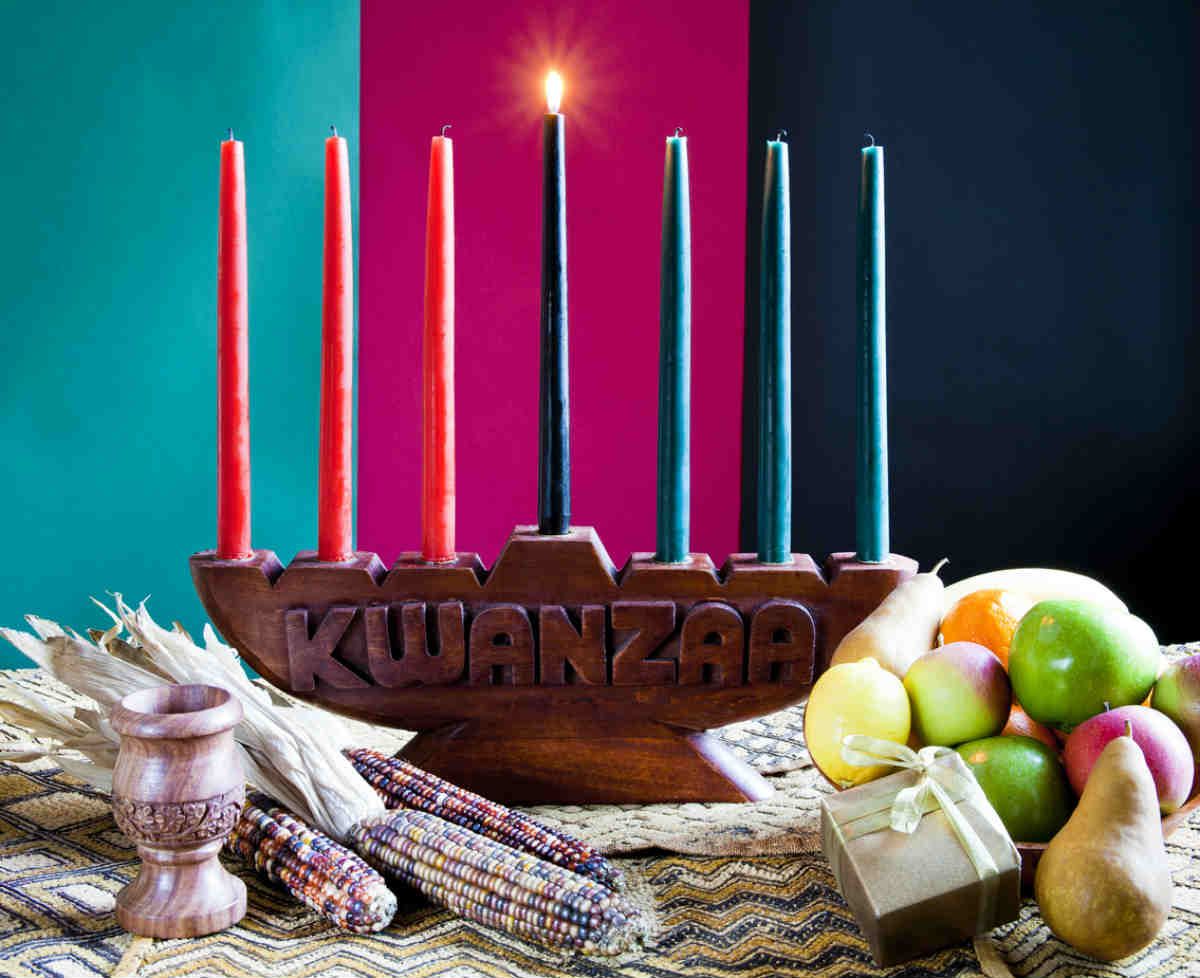

Articles
How Many Candles Does Kwanzaa Have
Modified: February 23, 2024
Discover the significance of Kwanzaa with our informative articles. Explore the rich tradition and learn about the number of candles used in this celebration.
(Many of the links in this article redirect to a specific reviewed product. Your purchase of these products through affiliate links helps to generate commission for Storables.com, at no extra cost. Learn more)
Introduction
Kwanzaa is a cultural holiday that celebrates African heritage and values. It was first established in the 1960s by Dr. Maulana Karenga, a professor and activist, as a way to honor African-American history and promote unity within the community. This week-long celebration, which takes place from December 26th to January 1st, is observed by millions of people around the world.
During Kwanzaa, various traditions and symbols are used to commemorate the African diaspora and its rich cultural heritage. One of the most prominent elements of Kwanzaa is the lighting of candles. These candles not only serve as decorative items but also carry deep symbolic meaning that reflects the core principles and values of Kwanzaa.
In this article, we will explore the significance of the candles in Kwanzaa celebrations. We will delve into the origins of Kwanzaa, the principles it represents, and the role that candles play in honoring African culture and history. Join us as we uncover the secrets behind the candles of Kwanzaa and discover the deeper meaning they hold for those who celebrate this vibrant holiday.
Key Takeaways:
- Kwanzaa’s seven candles symbolize unity, self-determination, collective responsibility, cooperative economics, purpose, creativity, and faith, guiding participants towards personal growth and community development.
- The ceremonial lighting of Kwanzaa candles fosters reflection, discussion, and a deeper understanding of African culture and values, inspiring individuals to incorporate these principles into their daily lives.
Origins of Kwanzaa
Kwanzaa was created by Dr. Maulana Karenga in 1966 as a way to bring African Americans together and celebrate their cultural heritage during the holiday season. Dr. Karenga, a professor of African studies, wanted to provide an alternative to the traditional Christmas holiday by emphasizing African customs and principles.
The word “Kwanzaa” is derived from the Swahili phrase “matunda ya kwanza,” which means “first fruits of the harvest.” This reflects the agricultural roots of many African cultures, where the harvest season is seen as a time of abundance and gratitude.
Dr. Karenga developed seven guiding principles, known as the Nguzo Saba, which form the foundation of Kwanzaa. These principles are: Umoja (unity), Kujichagulia (self-determination), Ujima (collective work and responsibility), Ujamaa (cooperative economics), Nia (purpose), Kuumba (creativity), and Imani (faith).
These principles are meant to encourage African Americans to reflect on their roots, embrace unity and collective responsibility, and strive for social and economic progress within their communities.
Since its inception, Kwanzaa has gained popularity and recognition worldwide. It has become a significant cultural celebration not only for African Americans but also for Africans in the diaspora and those interested in African culture and history. Kwanzaa provides an opportunity for individuals to reconnect with their roots, celebrate their heritage, and foster a sense of community and pride.
Principles of Kwanzaa
Kwanzaa is guided by seven core principles known as the Nguzo Saba. These principles, derived from African traditions and philosophies, serve as a framework for personal and community development. Each day of Kwanzaa is dedicated to a different principle, allowing participants to reflect on its meaning and significance. These principles are as follows:
- Umoja (Unity): Umoja emphasizes the importance of togetherness and collective purpose. It encourages individuals to work together, support one another, and build strong and unified communities.
- Kujichagulia (Self-Determination): Kujichagulia is the principle of self-determination. It emphasizes the need for individuals to define themselves, speak for themselves, and create their own destinies, free from external influences.
- Ujima (Collective Work and Responsibility): Ujima reminds us of the importance of collective responsibility. It encourages active involvement in our communities, working together to solve problems and improve the well-being of all individuals.
- Ujamaa (Cooperative Economics): Ujamaa promotes the idea of economic cooperation and shared prosperity. It emphasizes the importance of supporting and investing in black-owned businesses and fostering economic self-sufficiency within the community.
- Nia (Purpose): Nia focuses on setting and pursuing meaningful goals. It encourages individuals to find their purpose, contribute positively to society, and make a difference in the world.
- Kuumba (Creativity): Kuumba celebrates creativity and encourages the exploration and expression of artistic endeavors. It highlights the importance of using creativity to uplift and inspire others.
- Imani (Faith): Imani represents faith in oneself, one’s community, and the future. It reminds individuals to remain hopeful, resilient, and steadfast in their beliefs.
These principles serve to instill a sense of self-awareness, cultural pride, and collective responsibility among participants. They form the foundation of Kwanzaa’s values and reinforce the importance of unity, self-determination, community building, economic empowerment, purposeful action, creativity, and faith.
By embracing these principles during Kwanzaa and incorporating them into everyday life, individuals can foster positive change, promote social justice, and contribute to the development and progress of their communities.
Symbols of Kwanzaa
Just like any holiday, Kwanzaa has its own unique symbols that hold deep meaning and significance. These symbols help to amplify the message and values of the holiday, creating a visual representation of the principles and traditions associated with Kwanzaa. Let’s explore some of the key symbols of Kwanzaa:
- Mishumaa Saba (Seven Candles): The mishumaa saba, or the seven candles, are perhaps the most recognizable symbol of Kwanzaa. Each candle represents one of the seven principles of Kwanzaa, and they are arranged in a special candleholder known as a Kinara.
- Kinara: The Kinara is a candleholder specifically designed to hold the seven candles. It symbolizes the African roots and heritage of Kwanzaa.
- Mazao (Crops): Mazao represents the fruits and crops of the harvest, which are traditionally displayed in a decorative basket, called the Mkeka. This highlights the agricultural origins of Kwanzaa and the importance of sustenance and abundance.
- Mkeka (Mat): The Mkeka is a woven mat that serves as the foundation for the Kwanzaa table. It symbolizes the history, traditions, and heritage upon which the community is built.
- Kikombe Cha Umoja (Unity Cup): The Kikombe Cha Umoja is a ceremonial cup used during the Kwanzaa celebration. It represents unity, and it is passed among family members and friends to drink from, symbolizing shared responsibility and collective purpose.
- Zawadi (Gifts): Zawadi are meaningful gifts that are exchanged between loved ones during Kwanzaa. These gifts acknowledge individual achievements and demonstrate appreciation for the values and principles of Kwanzaa.
- Bendera (Flag): The Bendera, a Pan-African flag featuring the colors red, black, and green, is often displayed during Kwanzaa. These colors represent the struggles and unity of African people worldwide.
These symbols serve as visual reminders of the core principles and values of Kwanzaa. They enhance the meaning of the holiday and help to create a festive and symbolic atmosphere. Each symbol represents a different aspect of African culture, unity, and progress, emphasizing the importance of community, heritage, and positive change.
By incorporating these symbols into Kwanzaa celebrations, participants can deepen their understanding and appreciation of their African heritage, foster a sense of pride and unity, and cultivate the spirit of Kwanzaa in their communities.
The Seven Candles of Kwanzaa
One of the most significant aspects of Kwanzaa is the lighting of the seven candles, known as the Mishumaa Saba. These candles represent the seven principles of Kwanzaa, also known as the Nguzo Saba. Each candle is lit on a specific day of the celebration, allowing participants to reflect on the principle it represents. Let’s explore the meaning behind each of the seven candles:
- Umoja (Unity): The black candle, placed in the center of the Kinara, represents Umoja, the principle of unity. It is lit on the first day of Kwanzaa. Umoja symbolizes the importance of togetherness and working together for the greater good.
- Kujichagulia (Self-Determination): The far left red candle represents Kujichagulia, which means self-determination. It is lit on the second day of Kwanzaa. This candle symbolizes the ability to define ourselves, speak for ourselves, and shape our own destiny.
- Ujima (Collective Work and Responsibility): The far right green candle represents Ujima, the principle of collective work and responsibility. It is lit on the third day of Kwanzaa. This candle signifies the need for individuals to work together, support one another, and take responsibility for the well-being of the community.
- Ujamaa (Cooperative Economics): The second red candle, positioned to the left of the center black candle, represents Ujamaa, which means cooperative economics. It is lit on the fourth day of Kwanzaa. This candle symbolizes the importance of supporting black-owned businesses, practicing cooperative economics, and building economic strength within the community.
- Nia (Purpose): The far left green candle represents Nia, the principle of purpose. It is lit on the fifth day of Kwanzaa. This candle encourages individuals to pursue their goals and contribute positively to the community by identifying and fulfilling their purpose.
- Kuumba (Creativity): The second green candle, positioned to the right of the center black candle, represents Kuumba, meaning creativity. It is lit on the sixth day of Kwanzaa. This candle emphasizes the importance of using creativity to uplift and inspire others.
- Imani (Faith): The far right red candle represents Imani, the principle of faith. It is lit on the seventh and final day of Kwanzaa. This candle symbolizes the belief in oneself, one’s community, and the future. It encourages individuals to remain faithful, optimistic, and committed to their ideals and goals.
As each candle is lit, the principles they represent are discussed and reflected upon, fostering a deeper understanding of African culture and values. The lighting of the candles serves as a powerful reminder of the importance of unity, self-determination, collective work, economics, purpose, creativity, and faith in our daily lives.
By lighting the seven candles of Kwanzaa, participants honor the principles and celebrate the progress made within their communities, while also striving for further growth and empowerment for the future.
Kwanzaa has seven candles called Mishumaa Saba. There are three red, three green, and one black candle, representing the seven principles of Kwanzaa.
Read more: What Do The 7 Candles Of Kwanzaa Represent?
Lighting the Kwanzaa Candles
The lighting of the Kwanzaa candles is a central ritual of the holiday celebration. Each candle represents a principle of Kwanzaa, and the act of lighting them symbolizes the illumination of these principles in our lives. The lighting ceremony typically takes place in a specific order, with a designated leader or family member guiding the process.
The lighting of the candles follows a seven-day pattern, with one candle being lit each day of Kwanzaa. The order of lighting the candles is as follows:
- The black candle, representing Umoja (Unity), is lit first. It is placed in the center of the Kinara, which serves as the candleholder.
- On the second day, the red candle on the left side of the Kinara, symbolizing Kujichagulia (Self-Determination), is lit.
- On the third day, the green candle on the right side of the Kinara, representing Ujima (Collective Work and Responsibility), is lit.
- On the fourth day, the first red candle, positioned to the left of the center black candle, symbolizes Ujamaa (Cooperative Economics) and is lit.
- The fifth day involves lighting the green candle on the left side of the Kinara, representing Nia (Purpose).
- On the sixth day, the second green candle, positioned to the right of the center black candle, symbolizes Kuumba (Creativity).
- Finally, on the seventh day, the far-right red candle representing Imani (Faith) is lit.
Each candle is lit with a separate flame, generally from the previous day’s candle, to symbolize the continuity and connection between the principles throughout the week. The lighting of the candles is typically accompanied by reciting the principle associated with each candle, reflecting on its meaning, and discussing how it can be applied in daily life.
Kwanzaa candle lighting ceremonies often take place in the evening, with participants gathering around the Kinara. It is customary to dim the lights and create a serene atmosphere to focus on the candles and the significance they hold.
The lighting of the Kwanzaa candles serves to reaffirm the values and principles of the holiday, promote unity, self-determination, collective responsibility, cooperative economics, purpose, creativity, and faith. It is a time for reflection, introspection, and discussion, as families and communities come together to honor their African heritage and strive for progress.
By participating in the candle lighting ritual, individuals not only pay homage to the core principles of Kwanzaa but also strengthen their commitment to living out those principles throughout the year.
The Meaning of Each Kwanzaa Candle
The Kwanzaa candles, known as the Mishumaa Saba, hold deep symbolic meaning that aligns with the core principles of the holiday. Each candle represents a specific principle of Kwanzaa, allowing individuals to reflect on its significance and incorporate it into their daily lives. Let’s explore the meaning behind each of the seven Kwanzaa candles:
- Umoja (Unity): The black candle, placed in the center of the Kinara, represents Umoja, which means unity. It is lit on the first day of Kwanzaa. Umoja symbolizes the importance of togetherness, collaboration, and working together towards common goals. It serves as a reminder of the strength of unity and the positive impact it has on community development.
- Kujichagulia (Self-Determination): The far left red candle represents Kujichagulia, which means self-determination. It is lit on the second day of Kwanzaa. This candle symbolizes the power of individuals to define themselves, control their own destinies, and make independent choices. It encourages personal empowerment and the affirmation of one’s identity and values.
- Ujima (Collective Work and Responsibility): The far right green candle represents Ujima, the principle of collective work and responsibility. It is lit on the third day of Kwanzaa. This candle signifies the need for individuals to come together, support one another, and take collective responsibility for addressing community challenges. It emphasizes the importance of cooperation, collaboration, and shared responsibility towards building a stronger and more sustainable community.
- Ujamaa (Cooperative Economics): The second red candle, positioned to the left of the center black candle, represents Ujamaa, meaning cooperative economics. It is lit on the fourth day of Kwanzaa. This candle symbolizes the value of economic self-reliance, entrepreneurship, and cooperative economics within the community. It encourages individuals to support black-owned businesses, create sustainable economic opportunities, and work towards economic liberation and prosperity for all.
- Nia (Purpose): The far left green candle represents Nia, the principle of purpose. It is lit on the fifth day of Kwanzaa. This candle symbolizes the importance of setting and pursuing meaningful goals in life. It encourages individuals to find purpose, define their life’s mission, and actively work towards achieving their aspirations. It serves as a reminder to prioritize one’s dreams and contribute positively to the community.
- Kuumba (Creativity): The second green candle, positioned to the right of the center black candle, represents Kuumba, meaning creativity. It is lit on the sixth day of Kwanzaa. This candle celebrates the power of creativity and the arts in uplifting and inspiring individuals and communities. It encourages self-expression, innovation, and the use of artistic talents to positively impact society.
- Imani (Faith): The far-right red candle represents Imani, the principle of faith. It is lit on the seventh and final day of Kwanzaa. This candle symbolizes faith in oneself, in the community, and in the future. It emphasizes the importance of remaining steadfast, hopeful, and optimistic even in the face of adversity. It encourages individuals to have faith in their abilities to create change, to believe in the collective strength of their community, and to trust in a better future.
By lighting each candle and reflecting on its corresponding principle, individuals participating in Kwanzaa gain a deeper understanding of the values and ideals it represents. The candles serve as a powerful reminder of the essential principles needed to build and sustain strong communities grounded in unity, self-determination, collective responsibility, cooperative economics, purpose, creativity, and faith.
Through the symbolism of the Kwanzaa candles, individuals are inspired to incorporate these principles into their daily lives, fostering personal growth, community development, and a greater sense of unity among African people worldwide.
Kwanzaa Candle Holders
Kwanzaa candle holders play a significant role in the visual representation and ceremonial aspect of the holiday. The primary candle holder used in Kwanzaa celebrations is called a Kinara. The Kinara is a symbolic and decorative centerpiece that holds the seven candles representing the principles of Kwanzaa.
The Kinara is usually made of wood or other natural materials, reflecting the connection to African traditions and craftsmanship. It typically consists of a long, rectangular base with seven candle holders, each designed to hold a specific candle. The candle holders are arranged in a straight line, with the center holder reserved for the black candle representing Umoja (Unity).
The Kinara serves as a focal point during the Kwanzaa celebration. It is often placed on a table draped with a colorful African-inspired cloth, known as the Mkeka, which represents African history, heritage, and culture.
Throughout Kwanzaa, the candles are lit in a specific order, with one candle being lit each day. The lighting of the candles on the Kinara is a symbolic gesture that represents the illumination of the principles and values held dear during the holiday.
Besides the Kinara, individual families may choose to incorporate other candle holders or display their creativity in crafting unique candle holders that align with the spirit of Kwanzaa. These can include decorative candle holders made from traditional African materials such as clay, carved wood, or even recycled materials.
Kwanzaa candle holders not only serve a functional purpose but also enhance the visual aesthetic of the celebration. They contribute to creating an inviting and festive atmosphere during the holiday week, exhibiting the vibrancy and richness of African culture.
Whether using a traditional Kinara or creatively designing their candle holders, individuals and families honor the significance of the candles and the principles they represent. These candle holders add a touch of beauty and symbolism to the Kwanzaa celebration, serving as a reminder of the traditions, values, and heritage being celebrated and honored during this joyful time.
The Role of Candles in Kwanzaa Celebrations
Candles play a significant role in Kwanzaa celebrations, adding warmth, illumination, and symbolic meaning to the holiday. The lighting of the candles is a central ritual that allows participants to reflect on the principles of Kwanzaa and honor African culture and heritage. Let’s explore the various roles that candles fulfill during Kwanzaa:
Symbolic Representation: The candles represent the Nguzo Saba, the seven principles of Kwanzaa. Each candle holds deep symbolic meaning, representing a specific principle such as unity, self-determination, collective work and responsibility, cooperative economics, purpose, creativity, and faith. The act of lighting the candles symbolizes the illumination of these principles in our lives and the connection to African values.
Visual Decoration: Candles add an enchanting and festive touch to Kwanzaa decorations. The vibrant colors of the candles, often red, green, and black, complement the traditional African-inspired decor, creating a visually appealing and celebratory ambiance.
Progressive Lighting: One candle is lit each day of Kwanzaa, following a specific order. This progressive lighting builds excitement and momentum throughout the holiday week. It creates a sense of anticipation as each new candle is lit, allowing for reflection and discussion about the principle it represents.
Ceremonial Focus: The lighting of the candles brings families and communities together in a shared ritual. It creates a focal point for gathering, discussion, and reflection on the principles of Kwanzaa. The lighting ceremony often involves reciting the associated principle, discussing its significance, and sharing personal stories and experiences related to that principle.
Ambience and Intimacy: The gentle flame of the candles creates a warm and inviting atmosphere, encouraging a sense of togetherness, contemplation, and connection. The soft glow of the candles enhances the spiritual and communal aspects of the Kwanzaa celebration.
Reminder of Ancestral Traditions: Candles have been used in cultural and spiritual ceremonies across various African cultures for centuries. The presence of candles in Kwanzaa celebrations serves as a powerful connection to African ancestral traditions and rituals, paying homage to the rich cultural heritage of the African diaspora.
By incorporating candles into Kwanzaa celebrations, participants engage all their senses as they honor the principles of Kwanzaa and celebrate African culture and unity. The candles serve as a symbolic beacon that guides individuals and communities towards embracing the values of the holiday throughout the year.
Through the act of lighting candles, families and communities can renew their commitment to unity, self-determination, collective responsibility, cooperative economics, purpose, creativity, and faith, fostering personal growth and community development. The glowing flames of the candles illuminate the path towards a brighter future, filled with harmony, empowerment, and progress.
Read more: How Many Seeds Does A Banana Have
Conclusion
Kwanzaa is a vibrant and meaningful holiday that celebrates African heritage and values. Throughout the week-long celebration, candles play a central role, illuminating the path towards unity, self-determination, collective responsibility, cooperative economics, purpose, creativity, and faith. As the flames flicker, they symbolize the principles that guide Kwanzaa participants and remind them of the importance of their African roots.
The origins of Kwanzaa can be traced back to the 1960s, when Dr. Maulana Karenga created the holiday as a way to honor African-American history and promote unity within the community. Today, Kwanzaa has become a significant cultural celebration embraced by millions worldwide, serving as a reminder of the rich heritage and resilience of the African diaspora.
From the seven principles of Kwanzaa to the symbolic representations of the candles and the ceremonial lighting, every aspect of the holiday holds deeper meaning. The principles of unity, self-determination, collective work and responsibility, cooperative economics, purpose, creativity, and faith guide participants towards personal growth, community development, and positive change.
The Kwanzaa candle holders, particularly the Kinara, serve as visual representations of the principles and anchor points during the celebration. They enhance the festive atmosphere and provide a focal point for families and communities to gather, reflect, and share stories that connect them to their African roots.
As the candles are lit each day, participants engage in spirited discussions about the principles they represent. These discussions help to foster a deeper understanding of African culture, history, and values, and inspire individuals to incorporate these principles into their daily lives long after Kwanzaa has ended.
Kwanzaa reminds us of the power of unity, the importance of self-determination, and the value of collective responsibility. It encourages us to be creative, purposeful, and faithful in our pursuits. As we light the candles of Kwanzaa, we are reminded of our potential to make a positive impact, both within ourselves and in our communities.
As the candles burn, they serve as beacons of hope, illuminating the path towards a future filled with equality, justice, and prosperity for all. Kwanzaa challenges us to embrace our African heritage, celebrate diversity, and work together towards a brighter and more harmonious world.
As we conclude this exploration into the significance of candles in Kwanzaa, let us carry the spirit and values of Kwanzaa throughout the year. Let us foster unity, uplift one another, and strive for a better future, guided by the principles that the candles symbolize. Happy Kwanzaa!
Frequently Asked Questions about How Many Candles Does Kwanzaa Have
Was this page helpful?
At Storables.com, we guarantee accurate and reliable information. Our content, validated by Expert Board Contributors, is crafted following stringent Editorial Policies. We're committed to providing you with well-researched, expert-backed insights for all your informational needs.

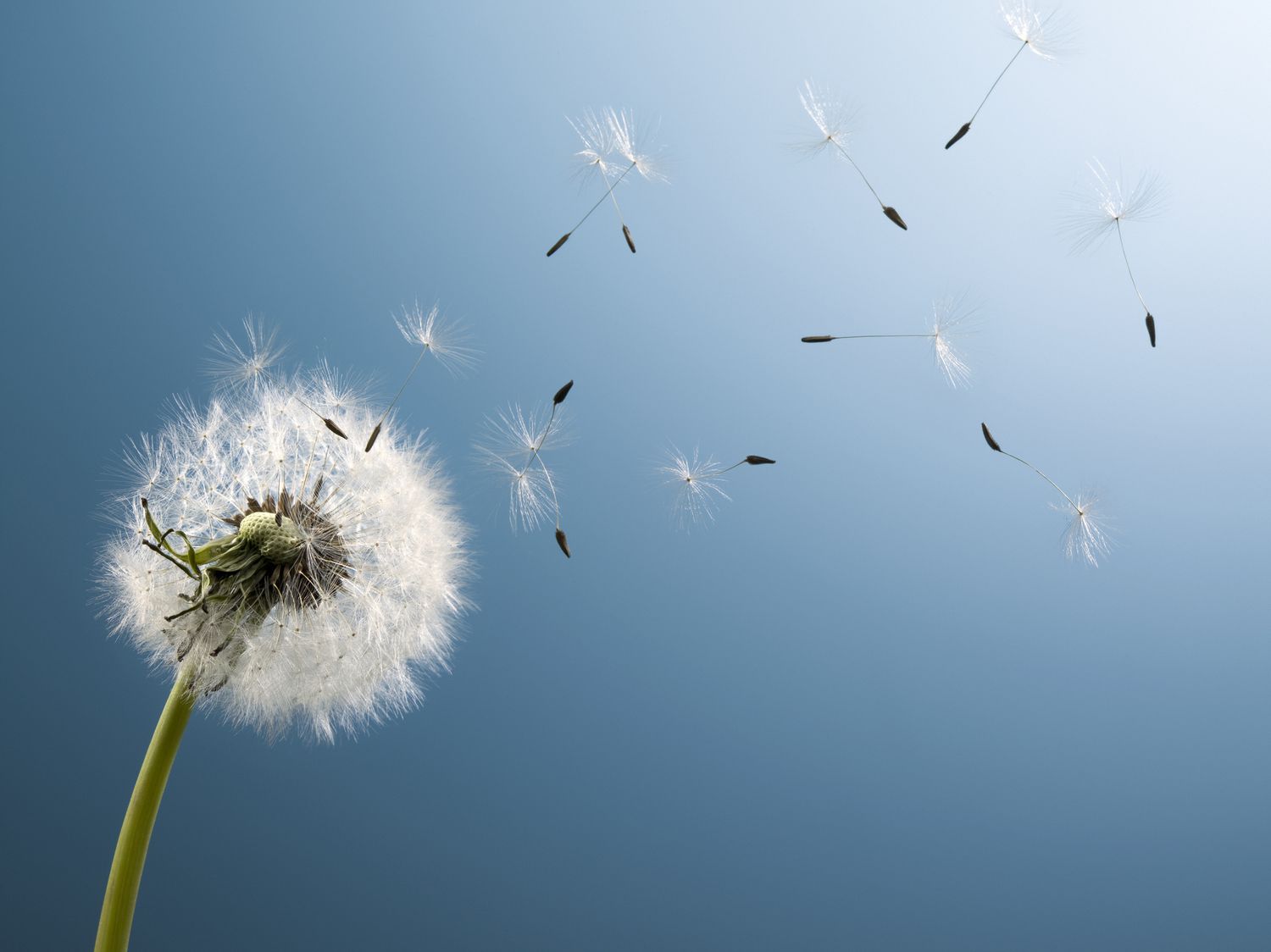
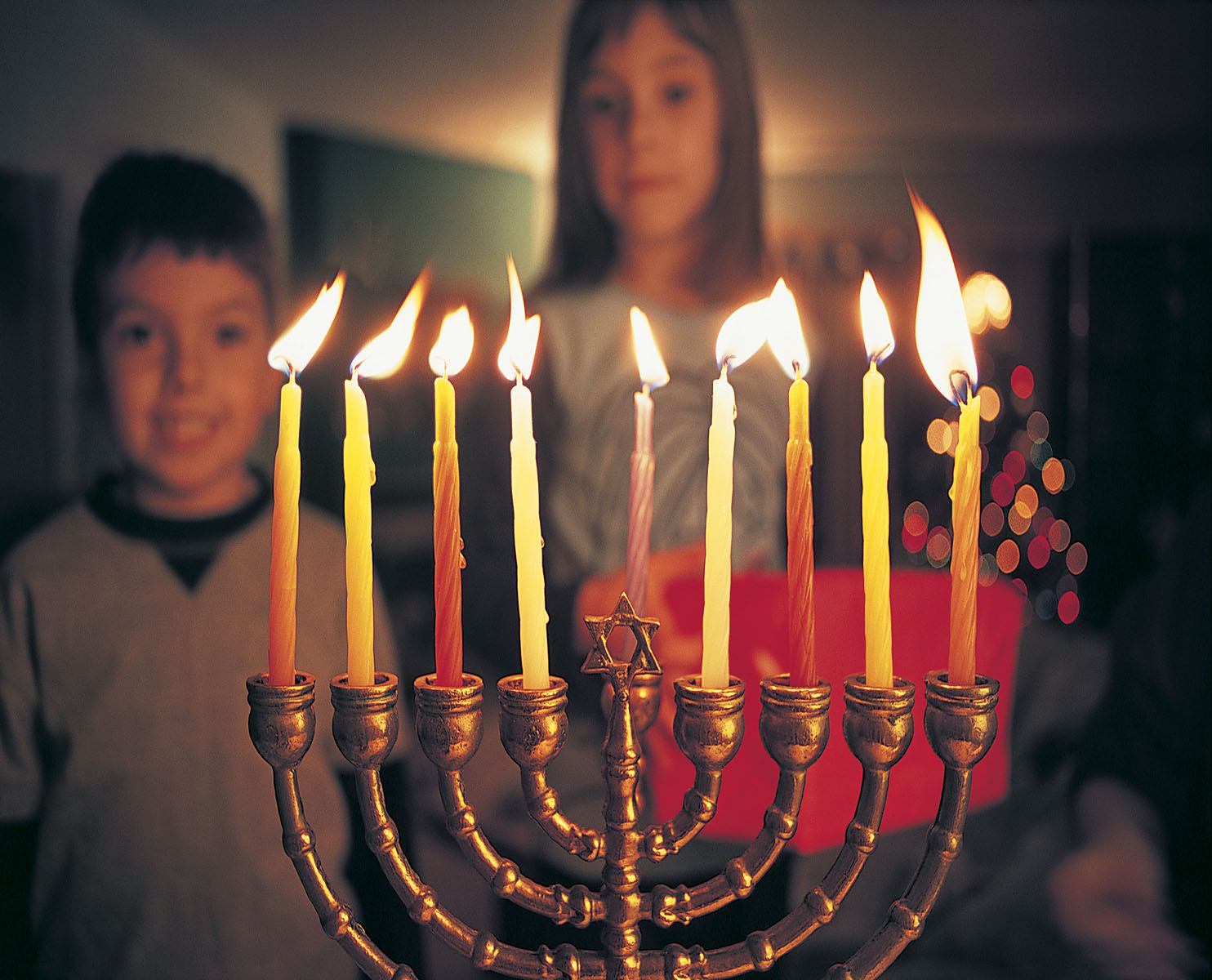






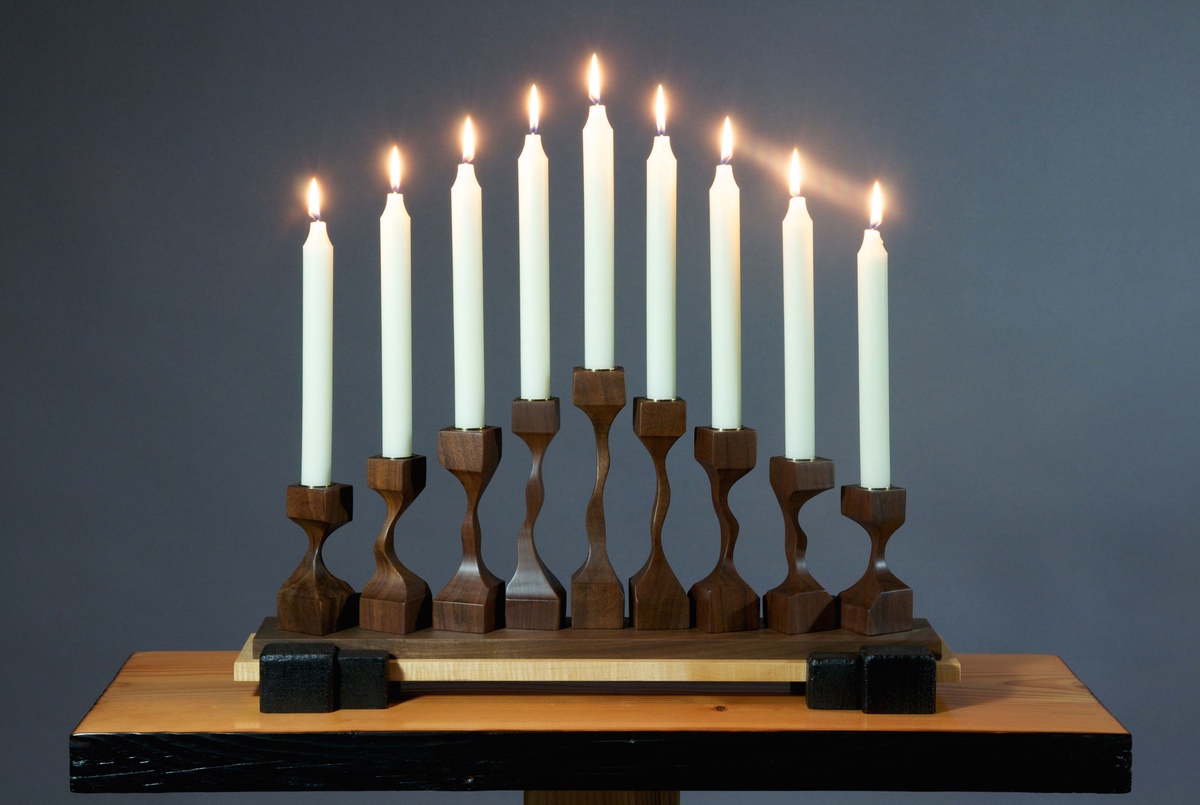
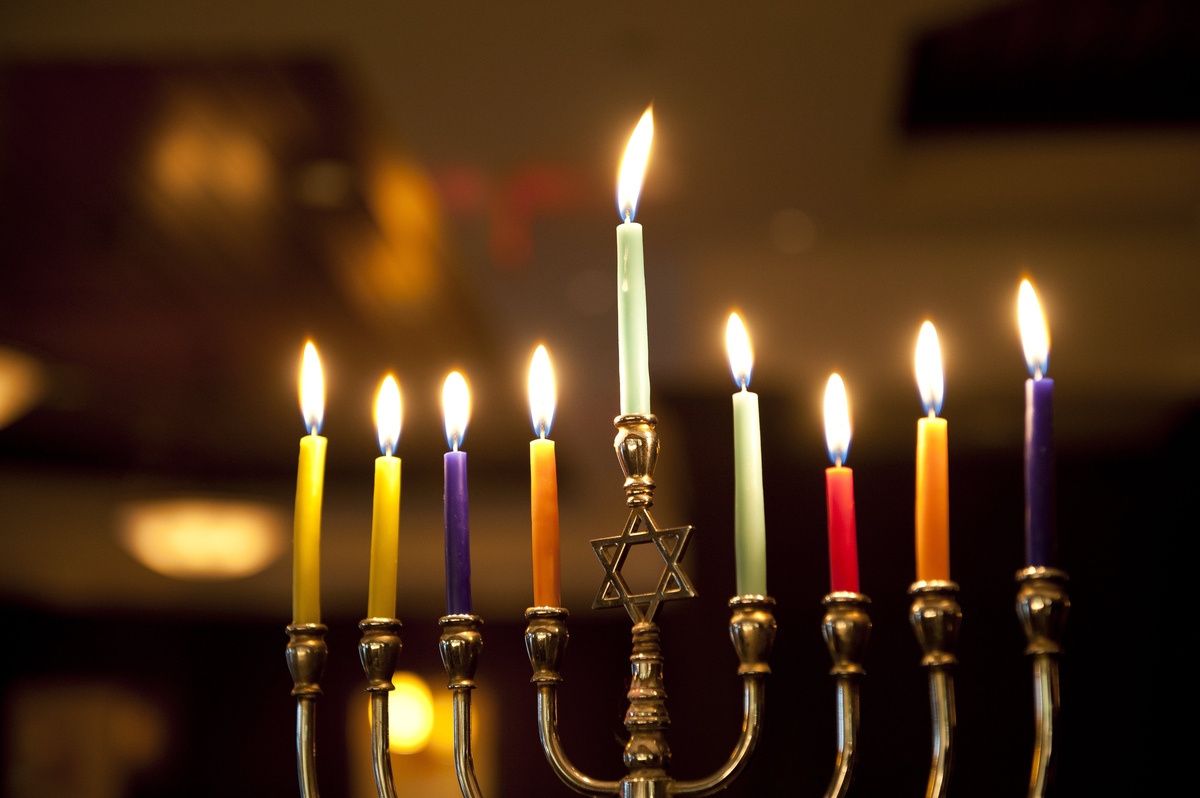
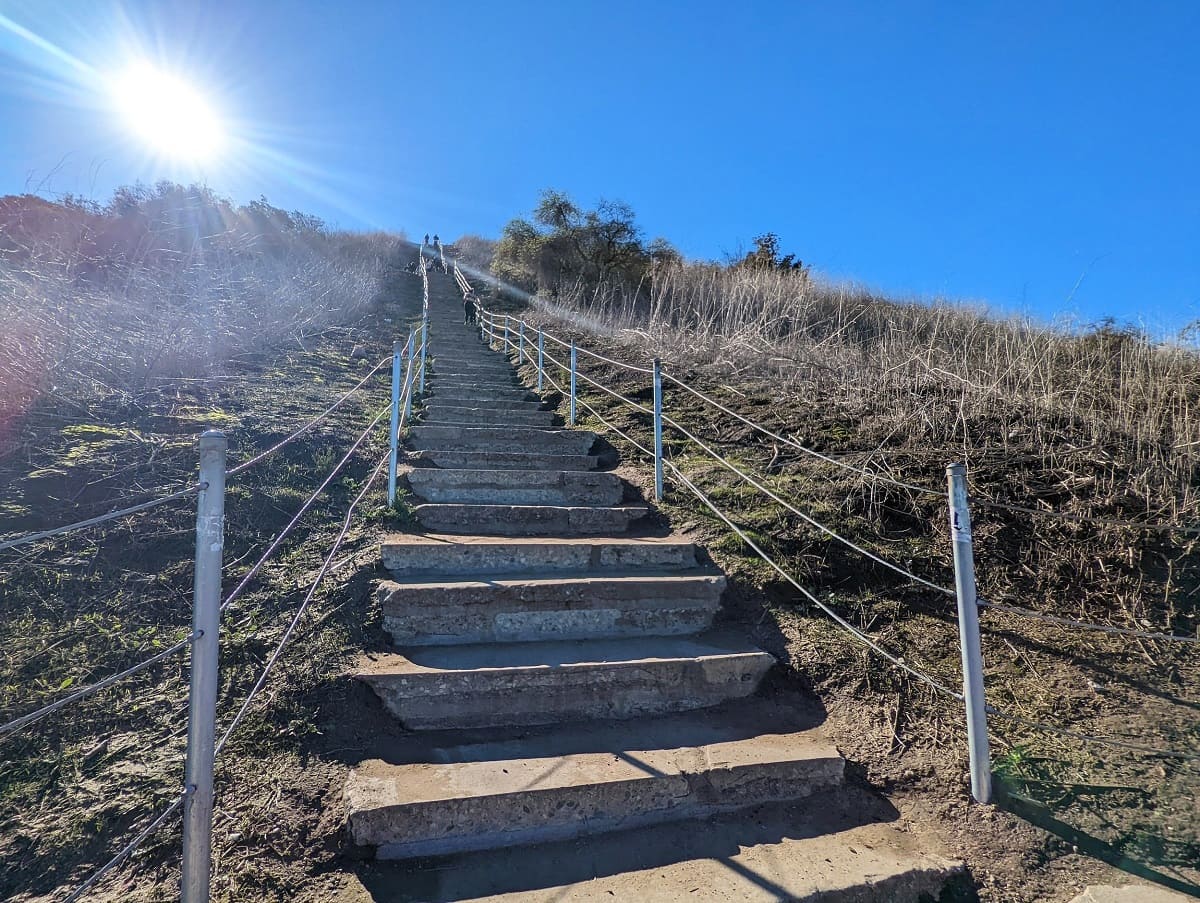


0 thoughts on “How Many Candles Does Kwanzaa Have”